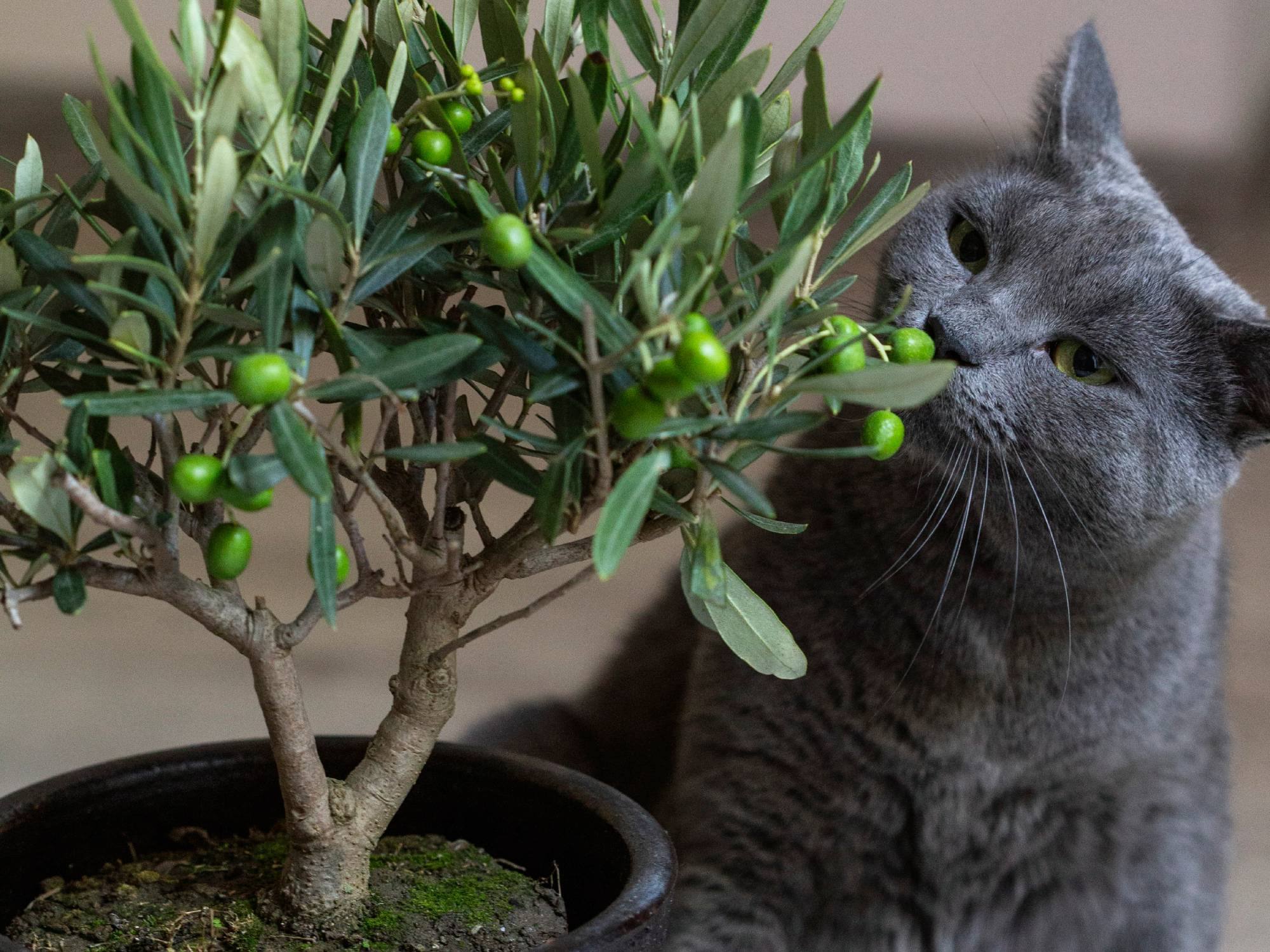

Keeping a rambunctious kitten or an energetic pup alive and well is not always easy, so you might want to pet-proof your place. Blocking escape ways is a great first step, but you might overlook another hazard—your green babies.
Plants can’t get up and run away from predators, so they use alternative methods to defend themselves. Some species, including some of the most popular plants for indoor gardening, have toxins in their leaves, stems, and even seeds to fend off animals and insects in the wild. Those same chemicals can easily hurt your pet if they suddenly decide to go vegetarian.
Before adopting a four-legged roommate, consider swapping your plants for similar-looking, non-toxic options. This will save you and your pet unnecessary distress, while at the same time keeping your indoor jungle aesthetic intact.
If you like pothos, try peperomia
The crawling and trailing pothos, also known as Devil’s ivy, is a favorite among new plant parents. But unfortunately, this low-maintenance green is toxic to cats. Avoid plants like pothos contain insoluble calcium oxalate crystals, which can be irritating to the lips and mouths of a curious biter.
“These crystals have needle-like structures that puncture the skin when they’re chewed or ingested,” says Paris Lalicata, plant expert at The Sill. “While they’re not fatal, it could give pets difficulty swallowing or breathing.”
[Related: Quick and dirty tips to make sure your plants love the soil they’re in]
Peperomia, a species native to Mexico and Central and South America, doesn’t trail the same way as pothos, but certain members of this plant family have similar green coloration. Also known as a baby rubber plant or radiator plant, peperomia requires little care, making it a great starter plant, just like the pothos.
Toss it in indirect sunlight and water it when the soil is dry. You’ll sleep soundly at night knowing your cat won’t die if they munch away on it.
If you like true lilies, try a Christmas cactus
One of the draws of a luscious true lily is its beautiful white flowers. But animals should keep away—while this plant can cause dogs problems, too, it is extremely dangerous for felines.
“Even cats getting the pollen on their nose and licking it off is enough to cause kidney failure,” says Karyn Bischoff, professor at Cornell University’s College of Veterinary Medicine. “Even if you put [lilies] up high, the cat can still get the petals when they fall down.”
The specific toxin responsible for this nefarious effect has been elusive, and researchers are still unclear as to why true lilies are so vile to felines. If you’re craving a flowering plant that won’t send your pointy-eared friend to the vet, check out the Christmas cactus—a plant that will recognize day length, temperature, and light levels to only bloom around the holidays.
Bright, indirect light is the way to go with this leafy green, and the brighter the source, the more blooms it’ll have. This cactus also enjoys humid conditions, so it’s a great bathroom choice.
If you like the sago palm, try a Boston fern
The sago palm has a beautiful feathery foliage, but its leaves, and especially its seeds, are also dangerous. Lalicata explains the plant contains cycasin, a secondary plant metabolite that can also cause liver failure in pets.
If you don’t want to run any risks, a safer option for big green fronds is the Boston fern, also known as the sword fern. The indoor bracken might be a tad high maintenance for beginner plant parents, but a little love goes a long way.
The Boston fern is a tropical plant that prefers humidity and warm temperatures. It’ll struggle with extreme conditions, so it’s crucial to keep it away from air conditioning and heating vents. Give this plant a stable environment, frequent water and moisture, and watch it thrive.
If you like the philodendron, try a prayer plant
The classic dark green, rounded philodendron leaves are beautiful, and a staple among indoor gardeners. However, just like the pothos, this aroid can be irritating to pets upon ingestion. (It’s a good idea to watch out for other members of the aroid family as well, including the monstera, alocasia, and arrowhead plants.)
The prayer plant leaves are dark green like a philodendron, and also curl up like two praying hands held together at night—hende the name. The best part is that they won’t hurt your pets.
While philodendron is typically recommended for noobs, the prayer plant is slightly more difficult to care for, and prefers a lot of humidity and regular fertilizer. Still, if you’re willing to do the work, this beautiful flora won’t disappoint.
Other beautiful plants that won’t kill your pets
If you’re not sure which plants you like, then you can always browse some pet-safe options and choose your favorites. These include African violets, a little flowering plant with fuzzy leaves; spider plants, almost grass-like in nature; and even bamboo.
[Related: 13 toxic wild plants that look like food]
You should also keep levels of toxicity in mind. While aroids, lilies, and Sago palms are dangerous for cats and dogs, other popular plants, including ficuses like the fiddle leaf fig and euphorbs like the poinsettia can be irritating, albeit not deadly, too.
So before you splurge on the latest highly coveted plant you saw on TikTok, make sure to do your research. The internet is full of resources and specialists at your local nursery may also be able to guide you. Your furball will thank you.
Correction (December 16, 2021): The group of toxic lilies mentioned in the story has been corrected from peace lilies to true lilies. While peace lilies may have some toxic side effects for pets, it’s true lilies that can lead to kidney failure.